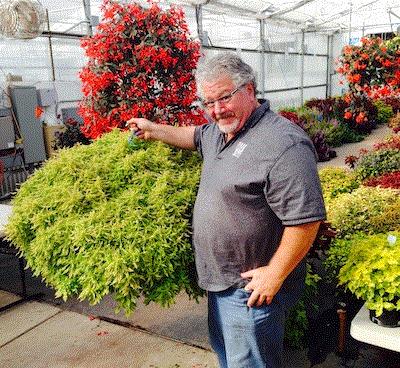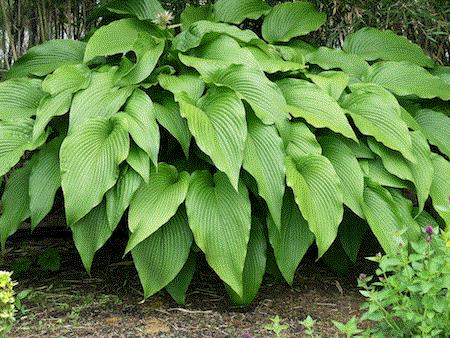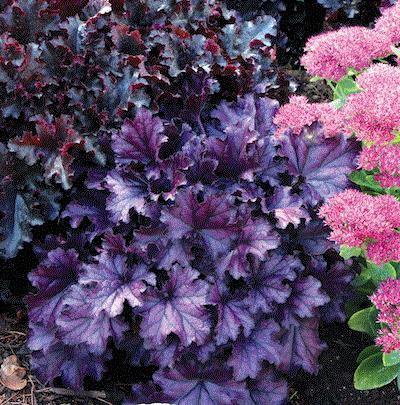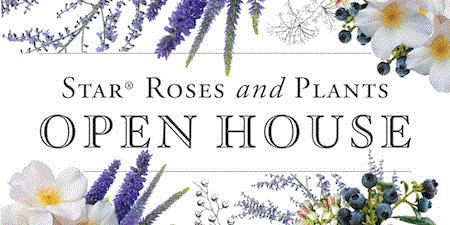Hardy Hydrangeas?
I recently received a question about Hydrangea macrophylla that I thought I’d share.The homeowner in the Chicagoland area read that H. macrophylla blooms on old wood so you shouldn't cut them back; however, after his overwinter, there is nothing but dead wood so he cuts them back to the ground since the new growth only emerges from the base of the plant in the spring. The questions are, “Why are my H. macrophylla doing this?” and “Are they only marginally hardy in Zone 5?”
I reached out to Chad Vanden Bosch, the Finished Grower Support Manager at Spring Meadow Nurseries and asked him to chime in and share his take on this landscape dilemma. Here’s what Chad had to say:
Hydrangea macrophyllas (macs) are the temperamental rock stars of temperate gardens. When they roll out of bed after a long winter of freezing temperatures and decide to perform, they can be showstoppers, but when the winter gets the best of them, it's immensely frustrating. Unfortunately, we cannot give our plants some ibuprofen and tell them to shake it off, so what causes overwintering damage and how do we prevent it?
Hydrangea macs are not usually damaged during the peak of the winter. Instead, the flower buds and stems are most susceptible to damage as the plants start to break dormancy in the spring, then get hit by a sudden cold snap.
To prevent damage, we can do a few things: site plants close to the house or a heated structure, reduce the amount of fertilizer in the fall, cover the plants with loosely packed dry leaves within a chicken wire fence or apply a large mound of mulch to cover the bottom half to two-thirds of the plant. If you choose to cover your hydrangea with mulch or leaves, be sure to check the lower buds as the plants start to wake. You don't want to trap excessive moisture around the growing buds and invite disease to the plant. All of these methods will protect the plant and your precious flower buds from early season temperature fluctuations and frosts.
What are some other options available to us? Fortunately for us, plant breeders have been listening to our cries of flowerless sorrow and are selecting for hydrangeas that bloom on both new and old wood! Old wood flowers are set on last year’s growth and new wood flowers are made on the current season's growth. It's important not to prune hydrangeas late in the summer, as the flower buds for the following spring will be removed.

Let's Dance Rave
Proven Winners Colorchoice has been breeding and releasing new reblooming hydrangeas for over a decade now. The Let's Dance series are reblooming Hydrangea macs that bloom on old and new wood. My personal favorite of the series is Let's Dance Rave, a dwarf mop head selection with hot pink or, when blued, violet-purple flower colors.
We also have the option of growing a different type of hydrangea that is more suited to withstanding ornery winters. Hydrangea serrata, or mountain hydrangea, has better bud hardiness so it's more tolerant to cold weather after the buds have started to form in the spring. Proven Winners Colorchoice has a line of Hydrangea serrata called Tuff Stuff that have been selected for superior bud hardiness and rebloom. My favorite is Tuff Stuff Ah-Ha, which reblooms heavily and has large doubled sepals on lacecap blooms that are pink (and can also be blued).
Here's a growing guide to commonly grown Hydrangea species: https://www.provenwinners.com/Hydrangeas-Demystified
There are many options available for temperate gardeners if they are willing to invest some time into winter protection or try planting new and updated varieties. Through either route, gardeners should have more success and be able to enjoy steady year after year performance with their hydrangeas, so sit back and enjoy the show.
Chad, thanks for helping out with this great question.

Geum Pretticoats Peach
Check out this outstanding new geum from Terra Nova Nurseries. It’s called Pretticoats Peach and produces lots of airy, semi-double peach flowers. Like other cultivars on the market, it blooms in the spring; however, unlike its competition, Pretticoats Peach reblooms all summer long (at least in Oregon). This hybrid geum not only has a long bloom time, it has a compact habit (10-inch foliage and 20-inches tall when blooming) and is easy to grow, deer resistant and hardy to Zone 5. With its reblooming ability, Pretticoats Peach is not only a great choice for perennial borders, it’s also an awesome perennial for decorative containers.
Meet the Breeder: Dan Heims

If you’re in the perennial biz, you’ve likely already heard of, met or attended one of his entertaining and educational presentations. In case you're new to the industry or have the lifestyle of a hermit, please allow me to introduce you to Dan Heims, breeder and co-owner of Terra Nova Nurseries in Canby, Oregon.
Dan is quite the plantsman and since co-founding Terra Nova Nurseries over 25 years ago, he has had a hand in bringing over 1,000 new perennials to the market. Fittingly named, Terra Nova literally means “new ground” and Dan’s constantly breaking new ground with his team’s innovative breeding and his company’s vision on marketing, propagating and licensing new perennials.
I had the opportunity to ask Dan a few questions about how he became the successful plantsman we’ve all grown to love. Curious? Read on …
Q&A with Dan
|
Paul: |
Dan, you’re fairly well-known in our industry, are there any interesting facts about yourself that not many people are aware of? |
|
Dan: |
At 13, I had 25 aquariums and a tropical fish business that I started. At 14, I worked in the Oregon Museum and Science’s Student Research Lab and had access to computers and a Gamma-Irradiator that I did mutational work with on sunflowers. I used to make my own fireworks. I currently play blues harp in a blues band called, “The Bloozers.” |
|
|
|
|
Paul: |
That’s cool. When did you discover your passion for plants and breeding? |
|
Dan: |
The bug hit hard in college. My houseplant collection went from zero to 1,200 different plants in four years. I was breeding begonias and gesneriads (pronounced either “guess-NARE-ee-ad” or “jez-NARE-ee-ad”) back then. |
|
|
|
|
Paul:
|
God bless you, Dan. Actually, let’s pause right here as I suspect many subscribers never heard of a gesneriad before. The Gesneriad family contains over 3,400 species; some of the most commonly known gesneriads are the African violet, gloxinia and streptocarpus to name a few. Please continue Dan.
|
|
Dan: |
My first perennial intro was Hosta ‘Jade Cascade’ in the early '80s. It won two top awards at the American Hosta Society Convention and sold at auction for the highest price for a green leaved plant. |
|
|

Jade Cascade grows three feet tall and an astonishing six feet across. Terra Nova Nurseries, Inc.
|
|
Paul: |
How has breeding changed since your humble beginnings? |
|
Dan: |
Computers! For tracking plants and crosses, as well as for doing a little research. Having a world-class tissue culture lab, outstanding staff and terrific facilities definitely make bringing new plants to the market easier than when I first began. |
|
|
|
|
Paul: |
I understand you have a team of breeders you work with now. How many introductions have you and your team made so far? |
|
Dan: |
While one of my begonia crosses was recently introduced, my early work covered less than 60 plants. Those and our collection of species from around the world did provide a framework for the development of over 1000 plants—
a world record! Each breeder has a set of genera to work with, species are collected within each genus, breeding goals are set and the work begins.
|
|
|
|
|
Paul: |
What introduction are you the most proud of? |
|
Dan: |
Wow… Probably Heuchera ‘Chocolate Ruffles’. There was never a ruffled heuchera before I started breeding them. There are so many varieties our staff have created that broke the rules of what was supposed to be possible, from coleus to begonias, that I can’t even keep count of them. |
|
|
|
|
Paul: |
What introduction was the most surprising? Perhaps there’s one you never thought would be possible or never imagined would be as popular as it’s become? |
|
Dan: |
Probably Heuchera ‘Forever Purple,’ as the most stunning and long-lasting purple forms out there. Sales are out of the park! |

Terra Nova Nurseries, Inc.

Future Breeding
Here's a few more questions I asked Dan regarding his thoughts on future breeding efforts.
|
Paul: |
From my understanding, you’re quite the world traveler. Are there any places that stand out for their genetic diversity or have untapped potential? |
|
Dan: |
The answer is actually a no-brainer. Of the 34 countries that I have visited, Japan tops the charts for its vastness of cultivars, and China for its untapped botanical resources. Our gang just returned from China with some exciting findings. |
|
|
|
|
Paul: |
What genera will we be seeing introductions from Terra Nova in the near future? |
|
Dan: |
I never see an end to the heuchera breeding. From a “nothing” plant to an international superstar in 25 years is outstanding! There are several we’re actively working on: veronica, leucanthemum, begonia, plectranthus, pulmonaria, artemisia, tanacetum, podophyllum, phygelius, and many others are in our greenhouses and fields and are ready to be launched. |
|
|
|
|
Paul: |
Before I let you go, what’s the future of plant breeding? |
|
Dan: |
CRISPR-Cas9! This will be the ultimate, high-tech key to unveiling the secrets that lie within a plant’s DNA. Crazy stuff! Do check it out. |
|
|
|
|
Paul: |
That’s over my pay grade, but looks very interesting. I’ll share this link with my subscribers so they can get a glimpse of what you’ll be up to.
http://www.isaaa.org/resources/publications/pocketk/54/default.asp |
Dan, thanks so much for your time today. I’ve enjoyed hanging out and learning a little more about you and what you do. Thanks for your contributions to the industry and keep up the good work.
Feel free to contact Dan with any questions you may have at dan@terranovanurseries.com. Click here to see the listing of all of the Terra Nova Nurseries introductions.

Star Roses and Plants Open House

Yes, it’s nearly open house season. You’ll soon be congratulating many of your relatives and friends who’ll be graduating from high school this year. It’s likely you’ll be attending one or more open houses over the next couple of months. Open houses don’t always have to be reserved for high school graduations. Star Roses and Plants is hosting an open house of their own and yes, there’ll be free food if you’re there at noon.
The open house will be on June 13, 2018 from 9 a.m. to 3 p.m. at the Star Roses and Plants trial gardens in Cochranville, Pennsylvania. Rain or shine, you’ll be able to peruse through the trial garden, see the container trials, meet the breeding team and catch up with peers. There’s also five 30-minute educational sessions covering roses, woodies, edibles, perennials and Star Track (their new 24/7 online order management program).
If you’ve never visited their trials, I recommend you give it a try this summer and enjoy the free lunch while you’re there. Click here for event info and registration.




Thanks for reading this edition of Perennial Pulse. Feel free to drop me a line from time to time to give me a status report or to let me know what challenges you're facing. Also, I'm always interested in learning what you'd like to read about in a future Perennial Pulse.
My email is ppilon@ballpublishing.com.
Best regards,
Paul Pilon
Editor-at-Large
Perennial Pulse
This email was received by you and over 33,652 subscribers!
If you're interested in advertising in Perennial Pulse, contact Kim Brown ASAP and she'll hook you up.